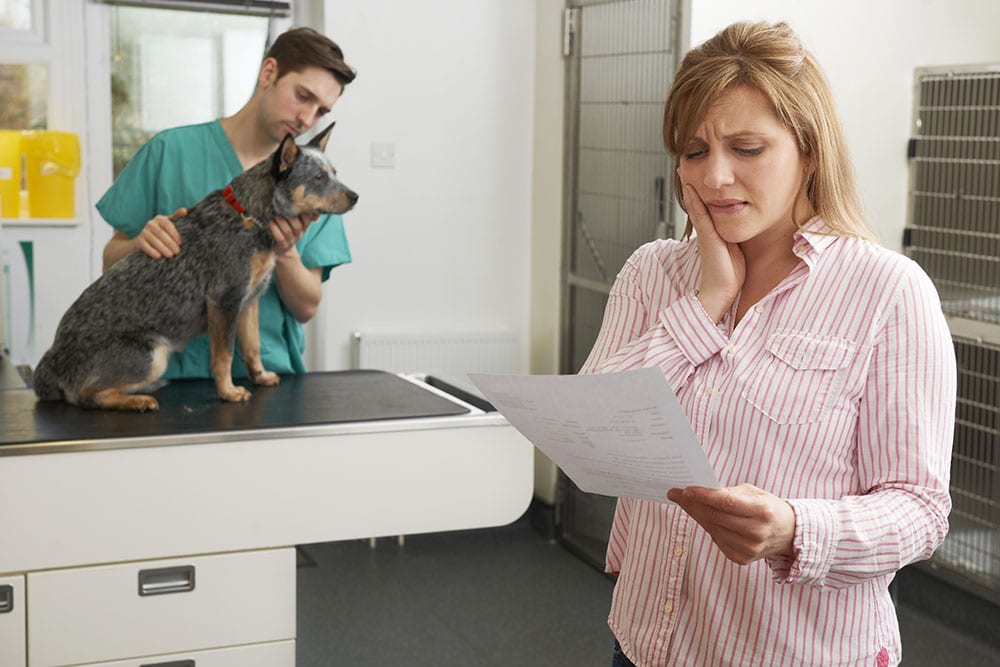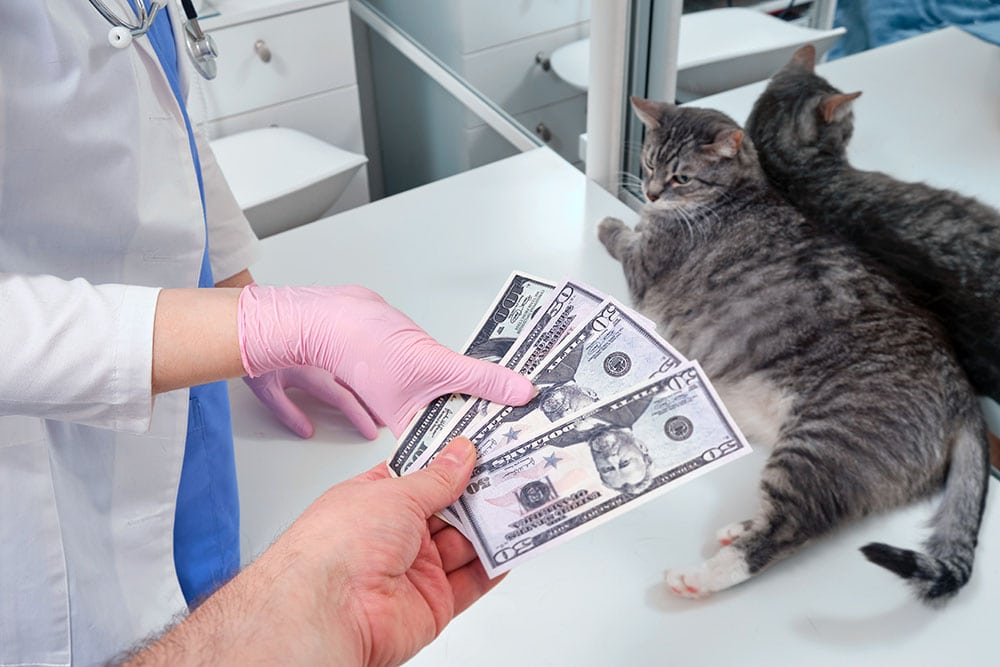12 Interesting Pet Insurance Myths and Misconceptions: Here’s the Truth!

Updated on

Owning pets can enrich our lives, provide us with companionship, and can complete a family. It’s important that we do what we can to care for our dogs while they’re with us. As well as providing food, exercise, and general care, this means looking after them when they get ill. Vet bills, especially those from unexpected illnesses and injuries, can be difficult to meet. This is where pet insurance should step in. Although it does depend on how comprehensive the cover is, pet insurance can pay for everything from examination to medication and aftercare.
Estimates suggest that there are more than 130 million dogs and cats in the US, but only 3.1 million are insured, with cost being one of the main reasons that deter most owners.123 But pet insurance doesn’t have to be expensive, so read on for the truth about pet insurance and other myths and misconceptions surrounding it.
Top 12 Pet Insurance Myths & Misconceptions:
1. It Costs Too Much
Pet insurance can cost as little as $30 per month, which covers most illnesses and injuries. You do have to pay more for certain types and breeds of pets. And comprehensive policies that include costs like examinations, as well as treatment, typically cost more, but such policies can protect you to the tune of tens of thousands of dollars per year. It gives owners peace of mind that if their pet does get ill, they can get the best treatment without having to cut corners or avoid certain treatments.

2. Insurance Doesn’t Pay Enough of the Costs
Another common reason for avoiding pet insurance is that it doesn’t cover enough of the costs in the event of an emergency. Again, it really does depend on how comprehensive the policy you choose is, but a basic policy will cover most veterinary-provided treatments and medication.
Comprehensive policies, which do cost more, will also cover examination fees and may also cover alternative therapies like massage or aqua therapy. It is also possible to increase or decrease the deductible value, which is the amount you have to pay before the insurance company pays the rest, and choose policies with unlimited annual and lifetime limits.
Obviously, you have the best chance of finding a policy like this, when checking with the top-rated pet insurance companies on the market. These are three of the best ones you can take a look at to get an idea:
Top Rated Pet Insurance Companies:
3. It’s Only for Dogs
Dogs are the most widely covered pet when it comes to insurance policies. This is usually because dogs cost more in vet fees, but that isn’t always the case.
Cat insurance is also commonly available. Horse insurance can be bought for riders and owners. And, if you own exotic pets or birds, it may take more effort to shop around and find insurance, but policies do exist for virtually all types of animals.

4. Pet Insurance Is Only Useful for Old Pets
We normally associate illness with old pets, and while it is true that senior dogs and cats are more likely to get ill and require treatment, this isn’t always the case.
Pet insurance is available for pets as soon as they are old enough to be rehomed from their mums. In fact, many insurance policies have a maximum age limit, and it can be difficult to get a new policy for pets aged 10 years or older. Some companies restrict new enrolment to pets aged 7 years. Once you have a pet insurance policy, though, you can continue to pay for and enjoy the coverage from that policy even when your pet reaches its senior years.
5. Application Is a Lot of Effort
Some insurance policies require pages and pages of a completed application form. But, while it is true that you have to provide details of your pets, your property, and some other details, most insurance applications are relatively straightforward and take minimal effort to complete. Pets with pre-existing conditions and certain breeds do have more requirements but the process is still relatively straightforward.

6. You Have to Use Specific Vets
With human health insurance, it is typical to be given a list of approved providers and healthcare professionals. If you use any other service, you are liable for charges or levies. Some pet owners believe the same to be true of pet insurance and see this as being restrictive.
However, most pet insurance companies cover treatment by any accredited and licensed vet. There may be some restrictions regarding how much the company will pay out for certain procedures, though. So, if your vet charges more than these acceptable rates, you will have to pay the extra. Even this isn’t true in all situations, though, so it is worth checking any policy first.
7. Pet Insurance Is Only Beneficial if Your Pet Is Ill Now
One of the things that put people off buying pet insurance is that if their pet doesn’t get ill, it means that they’re paying for something they aren’t using.
While this might be true, the same is true of a lot of life insurance policies, and you shouldn’t wait until a pet is ill to get them insured. In fact, most policies do not cover pre-existing conditions, so if your pet gets ill, that particular condition will not be covered by any policy you take out after their diagnosis. There’s also a waiting time with policies, usually between 7 days and 1 month, which means you can’t claim for anything that is diagnosed during this time.

8. Alternative Therapies Aren’t Covered
Alternative therapies can include treatments like acupuncture, massage, and aqua therapy. A lot of policies won’t cover these treatments, but more than a few will allow for alternative therapies as long as they are prescribed by an accredited vet and provided by an accredited service.
Check what types of therapies are included before applying for a policy and, if you’re in any doubt, contact the insurer to ask.
9. You Don’t Have to Pay the Vets
Vets and insurance companies rarely have payment systems operating between them. This does mean that you can use your own vet and still be reimbursed for the costs, but it also means that the insurance company does not have a way of paying the vet directly. In most cases, although not all, you will have to pay vet bills directly and then have the money reimbursed into your account in a few weeks.

10. You Do Have to Pay the Vets
It isn’t always the case that you have to pay the vet first. A few insurance companies do offer direct vet payments, which means that the vet invoices the insurance company, and the insurer pays the bill directly. This means that you don’t have to pay the money out of your own pocket or wait for reimbursement.
11. You Have to Wait Months for Reimbursement
Another misconception is that because you have to pay the vet bills yourself and then wait to get money back from the insurer, it takes months to get that money back. It is true that there is a reimbursement waiting time with most policies, but this time is usually between 1–2 weeks. Some companies can arrange reimbursement sooner than this, so the money is back in your account within a few days.

12. All Policies Are the Same
All pets are unique and so too are pet owners. As such, pet insurance is designed to replicate this uniqueness, which means that there are many different policies out there, and most offer some form of customization. At the most basic, you can choose policies that cover just accidents or just illness, or comprehensive insurance that covers any eventuality. You can increase or decrease annual and lifetime limits and deductibles, and you can choose policies that cover alternative treatments.
While this does mean you have to pay close attention to policy details, it also means that there is a policy out there to match your needs.
Comparing pet insurance companies can be a hassle. If you're looking for a balanced, customizable plan backed up by great customer service, you may want to try Lemonade.
Conclusion
Pet insurance is designed to protect you against the cost of vet treatment that arises as a result of injuries or unexpected illnesses. It is available for cats, dogs, horses, birds, and even exotic pets, and policies are available with different levels and types of coverage or can be customized to your exact desires.
Featured Image Credit: SpeedKingz, Shutterstock









